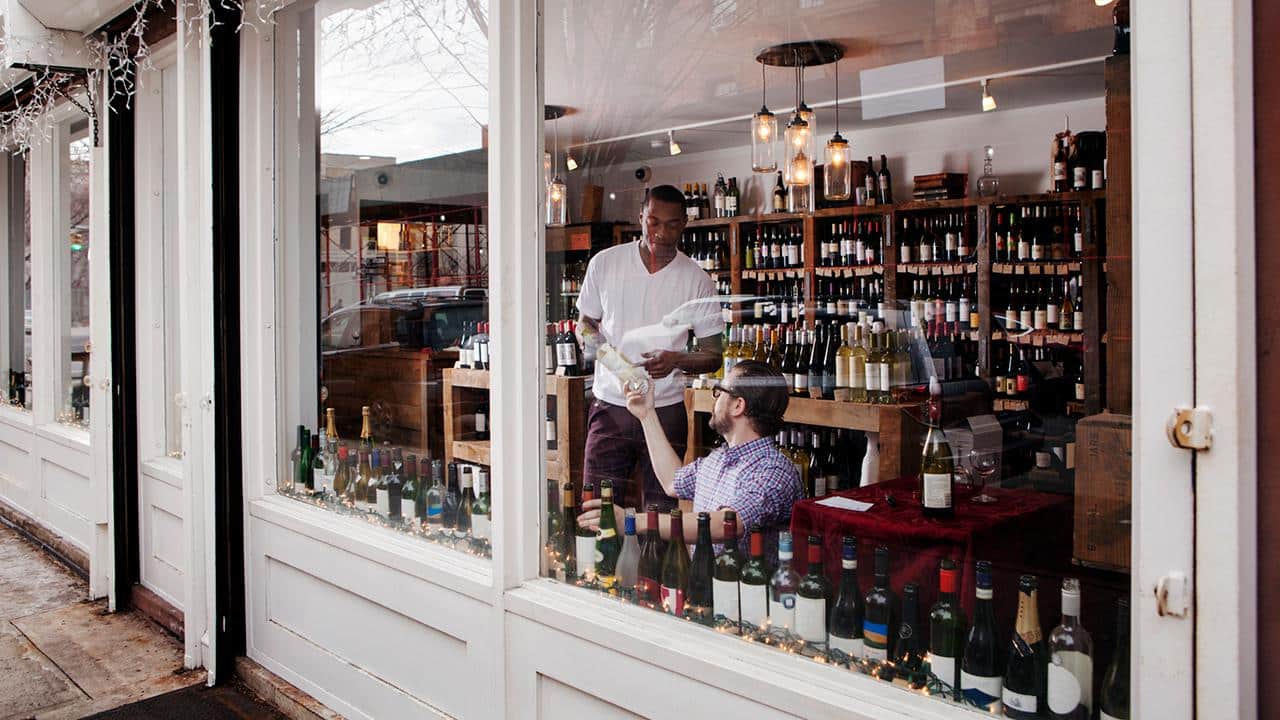A Buyer’s Guide to Environmentally-Conscious Wine

Cavan Images / Getty Images
 Why you can trust us
Why you can trust us
Founded in 2005 as an Ohio-based environmental newspaper, EcoWatch is a digital platform dedicated to publishing quality, science-based content on environmental issues, causes, and solutions.
In recent decades, consumers have become increasingly conscious of how our food is produced, and the local, sustainable food movement has moved into the mainstream. Many Americans have transitioned to plant-based diets as awareness mounts about factory farming and harmful large-scale agricultural practices like synthetic pesticide use, soil depletion, and harmful runoff from fertilizer-laden fields.
Yet, wine – a product of major importance in culture and cuisine – is largely left out of this conversation, although its environmental impact is significant. In France, where wine production accounts for only 3% of agricultural land, 20% of the country’s pesticide use occurs on vineyards, according to Decanter. Conventional vineyards are mostly monocultures that depend on intensive pesticide and fungicide use, thousands of pounds of which are used on California vineyards each year. Greenhouse gases are emitted from harvesting machinery, and CO2 as a byproduct from the alcoholic fermentation process employed by many winemakers.
Finding sustainable, environmentally-conscious wines takes some know-how, including some skepticism and caution about greenwashing. The FDA doesn’t regulate certifications or terminology on wine labels, unlike many other foods, and there’s no ingredients label on a bottle of wine.
The four main, recognized wine labels to look for are organic, biodynamic, natural, and sustainable. In general, organic wines avoid synthetic ingredients, biodynamic wines are created with a more holistic approach, natural wines use minimal processes and additives, and sustainable wines reduce waste and emissions. However, each of these terms is much more nuanced.
Organic
Like other food products with the USDA Organic label, organic wineries use no synthetic fertilizers, pesticides, or insecticides in their fields. This official label indicates that the vinification processes (AKA winemaking) was organic, employing no sulfites – which help preserve the wine and kill bacteria – that aren’t naturally occurring, and fermenting with only certified organic yeast.
The USDA also has a “made with organic grapes” label, which means the grapes themselves were grown organically, but the winemaking process itself wasn’t organic, and small amounts of sulfites and non-organic yeast might have been added.
This official government label is widely recognized for its rigorous certification process for farms, and is a trusted indicator of the practices used on wineries.
Biodynamic
Founded by Rudolf Steiner, biodynamic agriculture is a holistic approach to farming, taking into account the entire ecosystem and mixing the spiritual with the scientific. This kind of regenerative farming focuses on revitalizing degraded soil, increasing biodiversity, and sequestering carbon to reverse climate change. For example, a biodynamic farm might raise honeybees, maintain vegetable gardens, compost, and engage in other practices that benefit the whole farm ecosystem. Biodynamic farming is somewhat spiritual as well, and base planting/harvesting schedules on the lunar phases of the moon.
Like its organic counterparts, biodynamic winemaking doesn’t utilize synthetic chemicals, and there is a similar difference between biodynamic wine and grapes grown biodynamically: the former means that the winemaker used biodynamically-grown grapes and didn’t add yeast or make other adjustments to the product, while the latter means that the grapes themselves were grown biodynamically, but the process itself wasn’t necessary biodynamic (AKA the fermenting process might have utilized yeast additives, etc.).
The nonprofit organization Demeter certifies biodynamic wines and vineyards, and unlike most other wine certifications, the biodynamic label is recognized globally.
Natural
By its most basic definition, natural wines use the least possible amount of additives, chemicals, and technological processes; a natural wine in its purest form would be made from solely fermented grape juice, unlike conventional wines that often have added sugars, colors, stabilizers, and even animal additives like fish bladder and egg whites. While not necessarily made with organic or biodynamic grapes, many natural winemakers follow similar standards and use no chemical inputs.
The natural wine-production process harkens back to a more traditional way of making wine, employing no artificial practices like filtration, mechanical separation, etc. The absence of sulfites is a common attribute of natural wine, although small amounts (10-25 parts per million, as opposed to the 350 allowed in conventional wines) are usually considered acceptable in vintner circles. Given the lack of sulfites and filtration processes, the stability of the wine is often different; it might look cloudier as well, but many wine-lovers claim the taste is superior to conventional wine. Unlike the U.S., Europe has its own official natural wine label.
Sustainable
“Sustainable” wine is somewhat of an umbrella term with multiple certifications underneath it. Sustainable wineries tend to reduce waste and greenhouse gas emissions while conserving water, but the chosen practices are left up to the farmer.
The Certified California Sustainable Winegrowing (CCSW) label is one of the most widely recognized, issued by the California Sustainable Winegrowing Alliance for California wines, which account for 81% of all wine produced in the U.S. The vineyard, winery, or both can be certified, all of which are delineated with different labels. Considerations include pest, waste, and water management, as well as employee rights.
LIVE (Low Input Viticulture and Enology) Certified is another recognized label for wineries in the Pacific Northwest, which looks at the attributes of a region and make rules based on the unique conditions of that area; for example, some land-use practices might be permitted in an arid region but not in a wetter one. Headquartered in Lodi, California, where 1/5 of California grapes are grown, the Lodi Roles certification has many standards for its wines and wineries, including the Pesticide Environmental Assessment System (PEAS), which considers the impact of pesticides on the ecosystem and vineyard workers. Labor is a main consideration of the SIP (Sustainability in Practice) certification as well.
So, how do you identify truly environmentally-conscious wine?
Many wine stores have separate sections for environmentally-conscious wine, which is a good place to start. When perusing the aisles, look for the above certifications/labels; keep in mind that organic is an official, highly-regulated label in the U.S., unlike the other three, although they do tell consumers about the values and practices of a vineyard or winery.
Certification is often a lengthy, expensive, and complicated process; becoming a certified-organic farm takes three years and can cost upwards of $1,000. Some vineyards might not have the time or resources to become certified, but still follow the same standards as those that are. Do your own research about wineries to find out what their practices are; some that are uncertified might even go further than those that are when it comes to environmentally-friendly practices and ethical labor standards.
If possible, look for wines local to your region (that is, if you live in a wine-producing state). Like local food, wines produced nearby require much less transportation and your business contributes to the local economy.
Environmentally-conscious wines can be just as delicious as conventional wine, if not more so! Check out Food and Wine’s list of 10 Planet-Friendly Wines for recommendations to get started.
Linnea graduated from Skidmore College in 2019 with a Bachelor’s degree in English and Environmental Studies, and now lives in Brooklyn, New York. Along with her most recent position at Hunger Free America, she has interned with the Sierra Club in Washington, DC., Saratoga Living Magazine, and Philadelphia’s NPR Member Station, WHYY.
- 12 Creative Ways to Use Citrus Peels - EcoWatch
- A Brief Guide to the Impacts of Climate Change on Food Production ...
- Sustainable Wine Is Less Damaging to the Environment, But How ...
Subscribe to get exclusive updates in our daily newsletter!
By signing up, you agree to the Terms of Use and Privacy Policy & to receive electronic communications from EcoWatch Media Group, which may include marketing promotions, advertisements and sponsored content.

 233k
233k  41k
41k  Subscribe
Subscribe 



